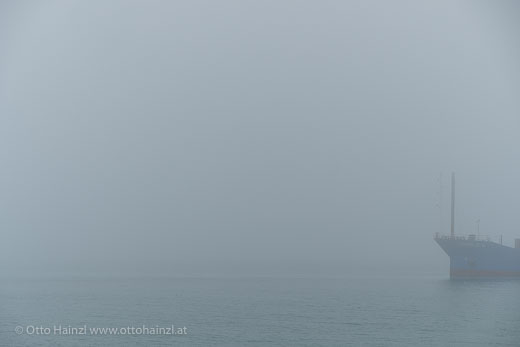
There are clear signs that I’ve reached the Sea!

There are clear signs that I’ve reached the Sea!
![]()
I think I crossed the Rubicon (Rolling Stones, Streets of Love).
“It was at three in the morning that I stole my way out of Karlsbad, since they would not have permitted me to go otherwise.” That’s how Goethe’s Italian Journey begins. He eventually chose to take the E45, which goes over the Brenner Pass. That’s how he got to Arcadia.
But his coach wasn’t so anxious to get there, so he took a few days longer than I did. His destination was Rome, while mine was Ancona and then Crete—where the E75 begins. That’s the true starting point for my investigation of what exactly an Europastrasse is.
In my case, too, it’s tough prying myself away from home. And I’d be interested to know how long Goethe’s travel preparations took. His text suggests that he snuck out of his birthday party at three in the morning, got into a coach, and left. But things are never that simple.
It’s well known that Goethe wasn’t a good photographer, but he still had stuff to pack. I, in any case, took weeks to finally have everything ready. And now I’m off, first taking the E45 towards the E75.
P.S.: In Bozen, I paid a visit to the Batzenhäusl, just like Goethe. Call it homage
.

I’m in the midst of gathering things together, packing, trying stuff out. Here’s the ultimate test of my portable campfire.
It’s the phase of pragmatic quandries. Summer or winter tires? What kind of kitchen things will I take along? Should I choose books or an e-reader? And do I need bug spray or antifreeze more … or, in fact, both equally?
So the core of the matter is: What awaits me on this drive up the E75? Though at second glance, it’s actually a multi-core matter (and hence state-of-the-art!).
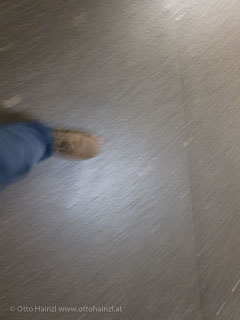
The E75 will take me through nine different countries and to three different seas, ultimately connecting two starkly different islands—and I can’t even begin to count the number of languages spoken along the way. The cultural diversity that we’re currently fighting tooth-and-nail is enormous—in a word, it’s Europe. That which awaits me out there will be a challenge. But the important questions right now are: What kinds of footwear should I take along? And … summer or winter tires?
So once again: what does await me? No matter what it is, I’ll need to be well equipped. Continue reading
Last Friday, I went and bought a travel guide. Now, at home, I page though it. Great stuff in there. But now come the questions: How much time do I take where, what do I actually want so see? If I stop to look at everything that interests me along my Europastrasse, I’ll need at least a year! A series of thoughts unfurls itself.
But then, clarity returns: I want to see the road, observe it, read the traces people have left behind. That, I think, is worth seeing! Which brings me to the very essence of a road: road means motion. A road isn’t a place for staying in one place, I think to myself.
So with that in mind, I’m getting ready to spend the next few months on the move. Guidebook maps are bad in that they lead you past what’s really interesting.
I’ve hit upon an question that interests me:
What is an Europastrasse?
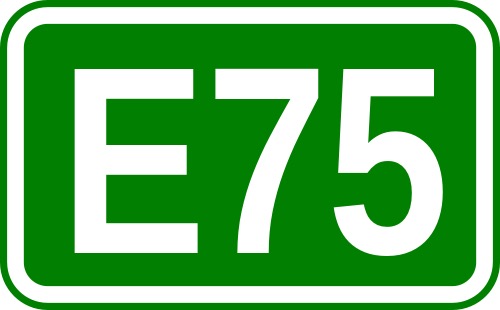
Most of us know these “E-roads” (green sign, white letters and numbers), but few of us know what they actually are. And I belong to this majority of the few: So just what is an Europastrasse?
That’s what I’d like to figure out, now. So I’ve decided to travel such an Europastrasse from beginning to end. That’s nearly 5,000 kilometers.
In any case, they’re roads that we’ve made—this much is certain. WE as a society have made them. Which naturally begs the question: Who are WE?
The answers can be found on the road. And come April, I’ll be on my way!
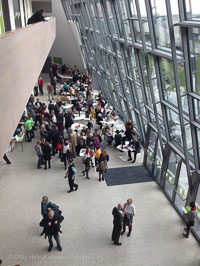
Last week, the Anton Bruckner Private University for Music, Drama, and Dance in Linz moved to a brand new building on Pöstlingberg.
It was a greenfield project. ButAs the excavation pit grew deeper, the remains of an old palace suddenly came to light, It was Schloss Hagen, which was torn down in 1963. And for this brief moment in 2011, Schloss Hagen reappeared.
It was a lyrical moment that inspired me to photograph Schloss Hagen Alte Ansicht [Schloss Hagen Old View].
The photograph can be read as bridge between past and future. We always build on history, sometimes without even knowing it—and always to create a future. Seeing the past and the future at the very same moment in time was my inspiration for this piece of work, which shows precisely this bridging of the chronological gap.
This photograph is now a permanent installation at the new main building of the Anton Bruckner University. Go there and have a look—you’ll find it on the 1st floor near the library.
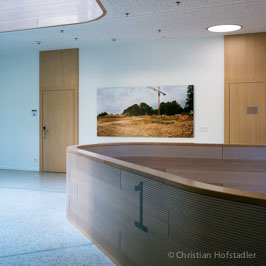
(Image by Christian Hofstadler)
By not by remaining silent about them but instead writing them down, one acknowledges one’s own thoughts […].
Writing means: reading oneself. Which is seldom only pleasurable;
(Max Frisch, Tagebuch 1946–1949, Suhrkamp Verlag, p. 19 – “Vom Sinn eines Tagebuchs” [On the Purpose of a Diary])